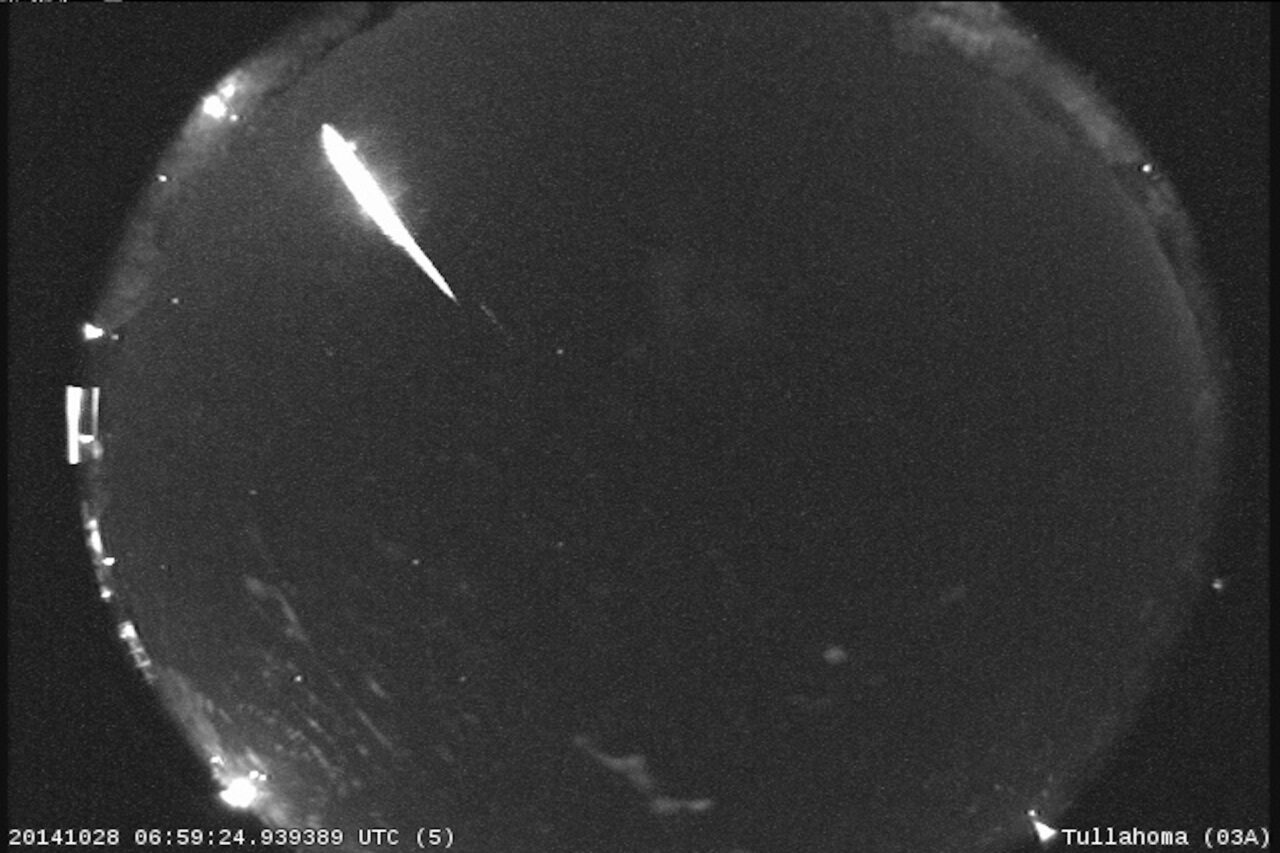Science
Earth Faces Potential Threat from Comet Debris in 2032, 2036

As Earth approaches a period of increased cosmic activity, a new study highlights the potential risks posed by debris from Comet Encke. Scientists warn that during the years 2032 and 2036, larger fragments from the Taurid meteor shower could represent a significant hazard to our planet.
Every autumn, Earth traverses the debris stream shed by Comet Encke, resulting in spectacular fireballs that illuminate the night sky. Generally, these meteor showers peak between late October and early November, radiating from the Taurus Constellation. The annual event typically features smaller, colorful meteors. However, the study published in Acta Astronautica indicates that denser clusters of pebble-sized fragments may pose an increased risk.
The researchers utilized observational data alongside planetary defense modeling to assess the likelihood of encountering larger Near-Earth Objects (NEOs). They found that the potential for air-burst incidents—where objects explode in the atmosphere rather than impacting the surface—could be greater than previously thought. This revelation raises concerns about the possibility of a resonant swarm of Taurids, influenced by the gravitational pull of Jupiter.
The Taurid stream orbits the Sun seven times for every two orbits of Jupiter, allowing some debris to interact with the gas giant at regular intervals. This interaction can lead to the formation of denser clusters of debris. According to Mark Boslough, a researcher at the University of New Mexico and lead author of the study, “The resonant swarm is theoretical, but there is some evidence that a sparse swarm of small objects exists because bright fireballs and seismic signatures of impacts on the moon have been observed at times that the theory has predicted.”
If the theorized Taurid resonant swarm occurs, the Earth will experience close approaches during 2032 and 2036. The study emphasizes the need for vigilance, as these years could see a heightened risk of meteor impacts. Fortunately, researchers are optimistic about leveraging existing technology to monitor these dense clusters.
Boslough stated, “We have the technology to test the Taurid resonant swarm by using existing telescopes for targeted sky surveys in 2032 and 2036 when the hypothetical swarm will make very close approaches. If we discover the objects with enough warning time, then we can take measures to reduce or eliminate the risk.”
Despite the potential threat, Boslough reassured the public, noting that “the average probability is extremely low,” meaning even an enhanced risk would still reflect a low likelihood of impact. He added that the swarm’s trajectory in 2036 would position it in the direction of the Sun, making fireballs difficult to see unless they are exceptionally bright.
As Earth continues its annual journey through the cosmic debris of Comet Encke, the upcoming years will be critical for planetary defense strategies. The scientific community remains focused on ensuring that humanity is prepared for any potential threats from the skies.
-

 Sports2 weeks ago
Sports2 weeks agoSteve Kerr Supports Jonathan Kuminga After Ejection in Preseason Game
-

 Top Stories6 days ago
Top Stories6 days agoMarc Buoniconti’s Legacy: 40 Years Later, Lives Transformed
-

 Business2 weeks ago
Business2 weeks agoTyler Technologies Set to Reveal Q3 2025 Earnings on October 22
-

 Science2 weeks ago
Science2 weeks agoChicago’s Viral ‘Rat Hole’ Likely Created by Squirrel, Study Reveals
-

 Politics2 weeks ago
Politics2 weeks agoDallin H. Oaks Assumes Leadership of Latter-day Saints Church
-

 Lifestyle2 weeks ago
Lifestyle2 weeks agoKelsea Ballerini Launches ‘Burn the Baggage’ Candle with Ranger Station
-

 Lifestyle2 weeks ago
Lifestyle2 weeks agoDua Lipa Celebrates Passing GCSE Spanish During World Tour
-

 Entertainment2 weeks ago
Entertainment2 weeks agoZoe Saldana Advocates for James Cameron’s Avatar Documentary
-

 Health2 weeks ago
Health2 weeks agoRichard Feldman Urges Ban on Menthol in Cigarettes and Vapes
-

 Health2 weeks ago
Health2 weeks agoCommunity Unites for Seventh Annual Mental Health Awareness Walk
-

 World2 weeks ago
World2 weeks agoD’Angelo, Iconic R&B Singer, Dies at 51 After Cancer Battle
-

 Business2 weeks ago
Business2 weeks agoMLB Qualifying Offer Jumps to $22.02 Million for 2024









